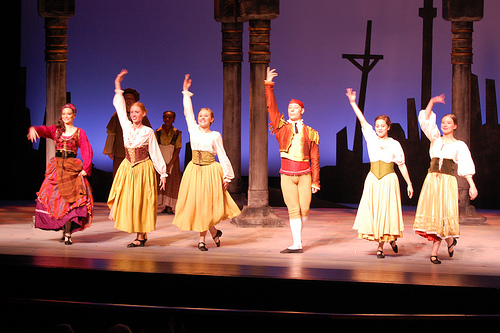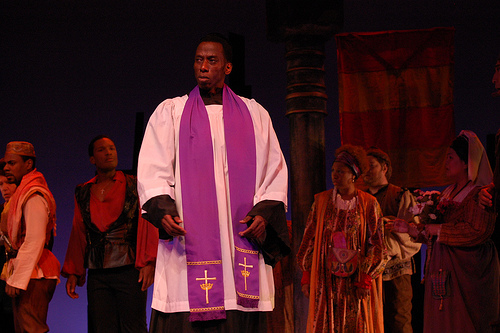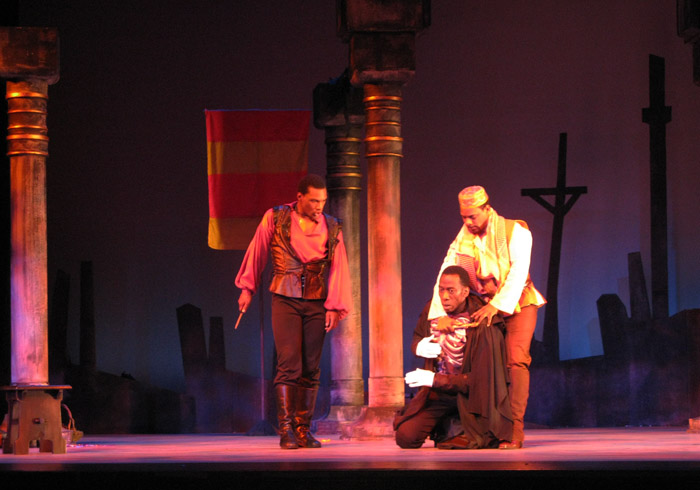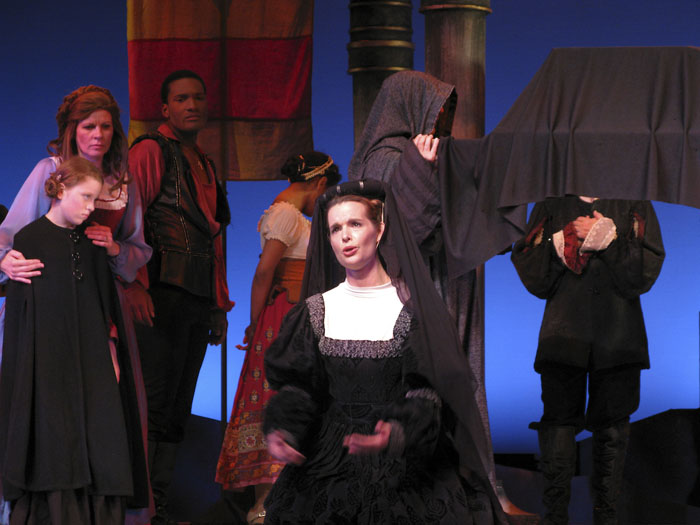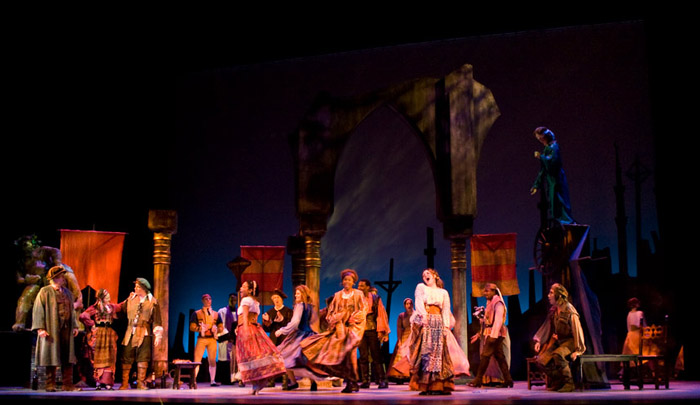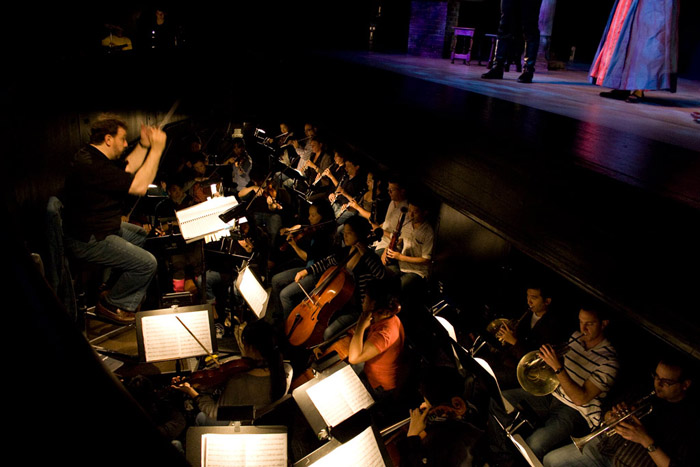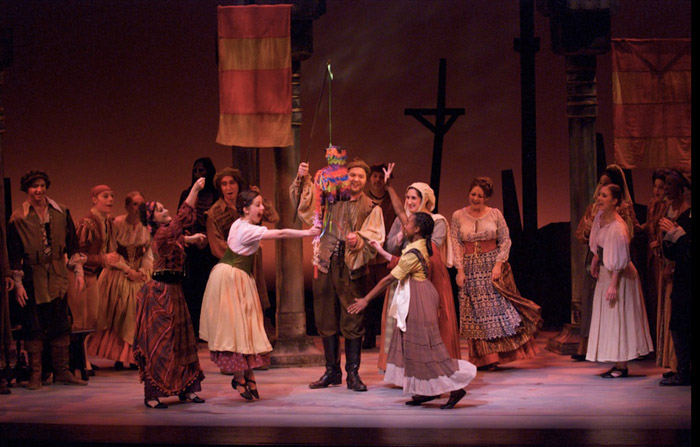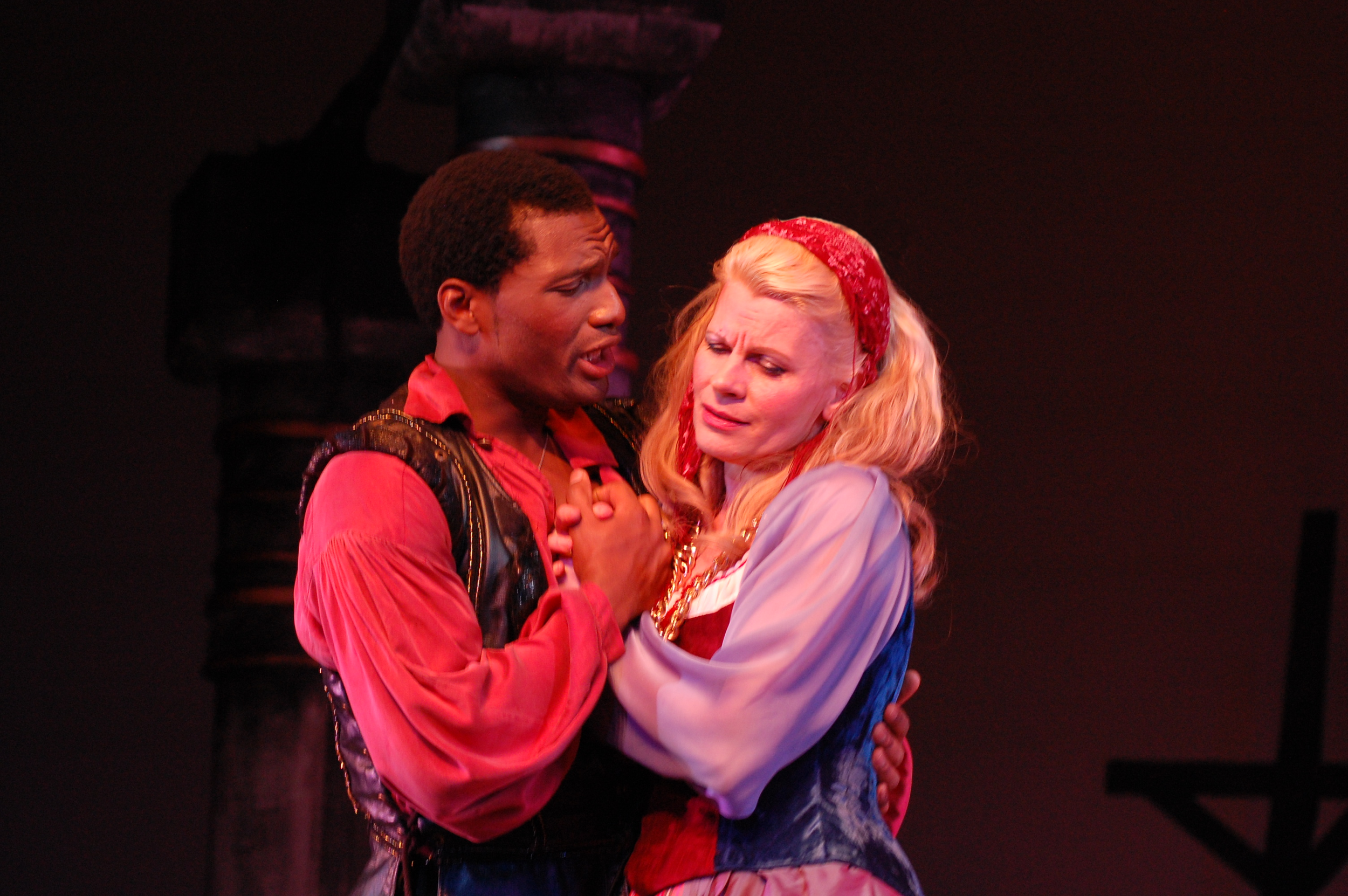ENCOMPASS MAINSTAGE PRODUCTION
2009
I TRE COMPAGNI
(The Three Companions)
An Opera in Two Acts based on “The Pardoner’s Tale”
From Chaucer’s THE CANTERBURY TALES
Greed Is The Root Of All Evil
A Tale Of Lost Friendships
Set In Spain Against A Backdrop At The End Of
The War Between The Moors & Christians
Music and Libretto by Composer Louis Gioia
(Sung in Italian with Supertitles)
Director's Notes by Nancy Rhodes Background and synopsis
I Tre Compagni (The Three Companions) by composer-librettist Louis Gioia, is based on The Pardoner’s Tale from Geoffrey Chaucer’s The Canterbury Tales. With timely themes of lost friendship and greed that has relevant connections for today, Father Gioia placed the action of the story in Spain at the end of the war between the Christians and the Moors. By the 15th century, as the Christians gradually conquered Spain, the Muslim rulers were pushed south, leaving only the kingdom of Granada, the Arab capital, in Muslim hands. Among the beautiful places they built was the Alhambra, within sight of the Sierra Nevada Mountains. There they constructed a walled city and palace fortress of astonishing subtlety and grace. Their scientists introduced mathematics, chemistry and astronomy, and their artists, a style of life which the medieval European barons had never dreamt of.
By 1490, the Christian forces of Aragon and Castille backed by the armies of Ferdinand and Isabella, laid siege to Granada, and after two years of fighting, the last Caliph, Boabdil, surrendered to the Christian forces. On his way to exile in Morocco, he looked back at the Alhambra, and wept at its beauty. This spot is now called “the Moor’s last sigh.” After the Muslim armies were expelled, the remaining Muslims and Jews were forced to leave Spain or convert to Roman Catholic Christianity or be killed for not doing so.
Set against this background, the three companions of the story, Tonio, a Christian who fought in the war, Maddalena, an orphan from gypsy background, and Moro, a Muslim who was forced to convert for his own safety after the war, have come together as friends during these uncertain and desperate times. They are the life of the town and entertain the townspeople with stories, card readings, gambling and drinking. They’ve been invited by the Taverner to entertain at the town square during the Carnival celebration of Shrove Tuesday, a last opportunity for excess before Lent begins. The figure of a huge Bacchus is paraded onstage to set off the festivities.
The three companions, Tonio tells of his experiences in war, Moro relates a tale of winning in cards, and Maddalena sings the medieval French chante-fable of Aucassin and Nicolette, a 13th century story. As a gypsy orphan, Maddalena believes that for those who love, life is full of hope, and she chooses this story because it is significant to the situation that many of the people in Granada are now experiencing. Nicolette, a Saracen slave (one who professed the religion of Islam), has fallen in love with a Christian, Aucassin. Through her faithfulness and their unwavering love, they are eventually re-united.
A metaphor for compassion and justice towers over the scene in the goddess Fortuna, goddess of destiny and often associated with justice. Fortuna, the personification of Luck, Fate, and Fortune, is also often represented veiled and blind, as modern depictions of justice are seen, and came to represent the capriciousness of life and her wheel, as the cycles of life and wheel of fortune.
In the end, the three companions, all from different ethnic and religious backgrounds, full of life and possibility, remain close friends until they tear their own lives apart by desperate choices and greed.
WORLD PREMIERE
featuring:
Ulla Westlund, soprano
Noah Stewart, tenor
Raemond Martin, bass-baritone Shannon DeVine, baritone
Director: Nancy Rhodes
Music Director/Conductor: Glen Cortese
Assistant Musical Director: Mara Waldman
Set Design: Damon Pelletier
Costume Design: A. Christina Giannini
Lighting Design: Izzy Einsidler
Choreographer: Justin Sherwood
Louis Gioia, Composer-Librettist of I Tre Compagni (The Three Companions), his second opera. The first opera, entitled Un Racconto Fiorentino (A Florentine Tale) received its premiere by Encompass New Opera Theatre in Alice Tully Hall on October 13, 2000. Donald Westwood of Opera News described the production as a “glorious, impassioned performance of a composition of great beauty and sincere interest.” The opera was subsequently staged by the New Jersey Association of Verismo Opera.
Gioia first became acquainted with “The Pardoner’s Tale” from Geoffrey Chaucer’s The Canterbury Tales, which inspired his libretto for I Tre Compagni. While an undergraduate student at the University of Western Ontario, he recognized the operatic possibilities inherent in the story, and for years the libretto slowly took shape in his mind. After doing graduate work at New York University and the Gregorian University of Rome, he earned his doctorate at the University of Pittsburgh. One of Dr. Gioia’s academic pursuits was the private study of music theory with Maestro Joseph Maneri. On completing more than twenty years of teaching at Baruch College, Dr. Gioia finally began devoting himself to writing music. Because he was born in New York City, he describes his work as American opera written in the Italian tradition. He insists that the national origin of a work need not be compromised by the foreign language it is written in---witness the output written in French by Donizetti. As for the Verdi-Puccini style of the music, that, claims the composer, is the source of his greatest inspiration.
Critical praise for Louis Gioia’s I Tre Compagni:
"I am happy to report that I Tre Compagni is a wonderful opera filled with melody. The composer, Louis Gioia, gave us all great joy in this beautifully crafted and colorful melodic masterpiece.
"Noah Stewart was superb as Tonio . . . possesses a brilliant tenor voice. Ulla Westlund . . . a vibrant soprano excelling in both lyric and dramatic passages. Shannon De Vine . . . robust baritone . . . boasts a thrilling B flat. Raemond Martin . . .dark beautiful bass-baritone.
"The striking sets, consisting of statues, gods, pillars and celestial and pastoral heights and the Act Two gloom of the cemetery, were by Damon Pelletier. The vibrant eye-catching colorful costumes were by A. Christina Giannini.
"Kudos to artistic director Nancy Rhodes, conductor-orchestrator Glen Cortese and the excellent 35-piece orchestra, and to Mara Waldman, associate conductor music and chorus director. Ed Herman’s wonderful sculptures added much to the visual aspect of the performance where his Bacchus reigned with the revelers."
By Nino Pantano, Brooklyn Daily Eagle
Production photos from I Tre Compagni
